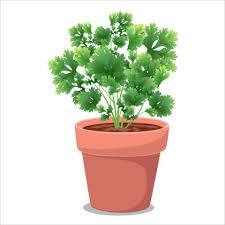Worksheet: The Plant Fairy - 2 | EVS for Class 3 PDF Download
Q1: Multiple Choice Questions (MCQs).
(i) What is a tree's trunk?
(a) The part of the tree that produces food
(b) The main woody stem of the tree
(c) The part of the tree that produces flowers
(d) The part of the tree that absorbs water
(ii) What is the process through which leaves prepare food for the plant?
(a) Digestion
(b) Respiration
(c) Photosynthesis
(d) Transpiration
(iii) What variety can be seen in leaves?
(a) Size
(b) Shape
(c) Color
(d) All of the above
(iv) Which plant does Ammu hold when playing plant fairy?
(a) Marigold plant
(b) Jasmine plant
(c) Neem tree
(d) None of these
(v) Which of the following is a medicinal plant?
(a) Neem
(b) Pudina
(c) Tulsi
(d) All of these
Q2: Fill in the Blanks.
(i) A plant's basic unit is a ___________.
(ii) What plant did Ammu touch during the game? Ammu touched the ___________ plant.
(iii) Shrubs are small plants smaller than ___________.
(iv) Photosynthesis is the process by which plants make __________ using sunlight.
(v) The category of plants that includes Guava and Mango trees is known as big trunk __________.
Q3: True or False.
(i) Seeds are the part of the plant that provides food.
(ii) Cactus is a desert plant.
(iii) In the game mentioned in the story, the 'Plant fairy' is a person who waters the plants.
(iv) The 'Plant fairy' game involved touching different plants in the garden.
(v) Leaves of a plant come in only one shape, which is round.
Q4: Answer the following Questions.
(i) Can you name the plant on which Didi was sitting?
(ii) Have you seen a tree with a trunk as thick as the one shown in the picture?
(iii) Do all the leaves have similar colours, shapes and margins?
(iv) Collect a few leaves of plants like lemon, mango, neem, basil (tulsi ), mint (pudina) and coriander (dhaniya). Crush the leaves and smell them. Do they all smell like? Can you identify the leaves just by their smell?
You can access the solutions to this worksheet here.
|
45 videos|182 docs|48 tests
|
FAQs on Worksheet: The Plant Fairy - 2 - EVS for Class 3
| 1. How do I take care of a plant fairy? |  |
| 2. Can I keep a plant fairy indoors? |  |
| 3. How often do plant fairies bloom? |  |
| 4. What are the common pests and diseases that affect plant fairies? |  |
| 5. How do I propagate a plant fairy? |  |





















